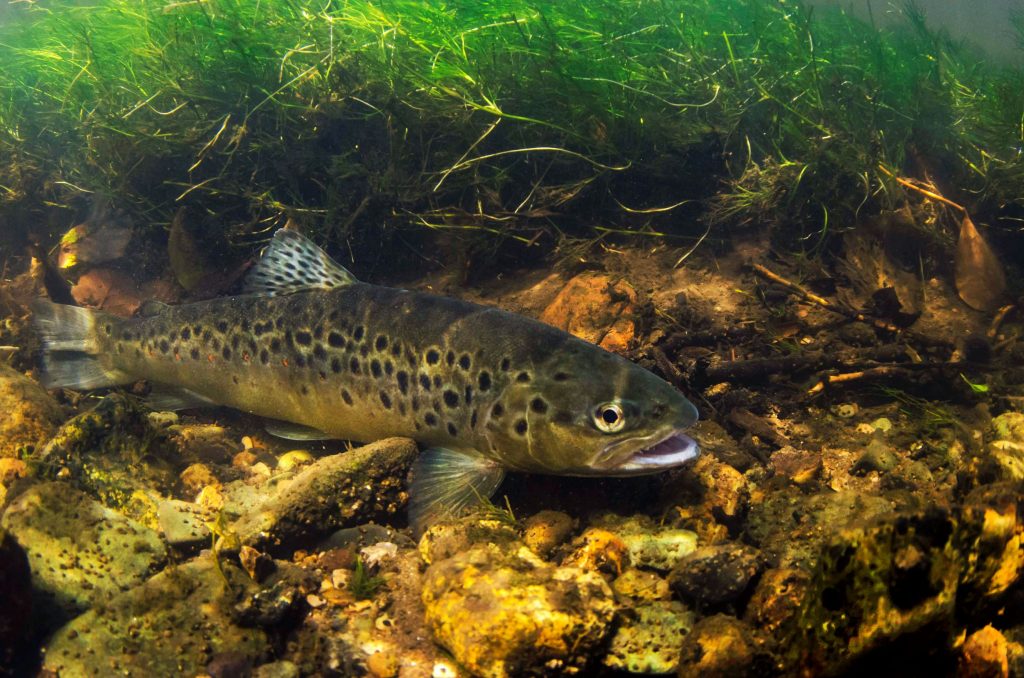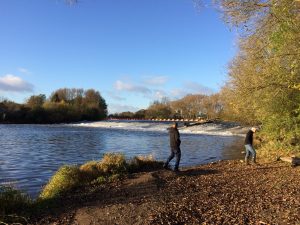Characteristics
Brown trout are powerful predatory fish. When young trout hatch, they live in their natal redds. They hatch with yolk sacs attached to them which supply the young fish with a food supply. When they grow to a few centimetres in length they become known as parr and they can travel further afield. As their name suggests, they are a brown colour but have attractive markings on their backs which tend to be pale ‘rings’ filled with dark spots. They have speckled dorsal fins and a long jaw filled with small teeth. Although similar in appearance to salmon, these fish only usually grow to between 30 and 50 cm’s.
Diet
Similar to chub, brown trout are opportunist feeders. They are equally as happy feeding on the surface, mid water or near the bottom, hunting out anything that passes within range. They will take both freshwater and terrestrial invertebrates including crustaceans and molluscs. As they grow they will hunt small fish. Anglers are usually successful catching brown trout when fly fishing and using mayfly imitation flies.




